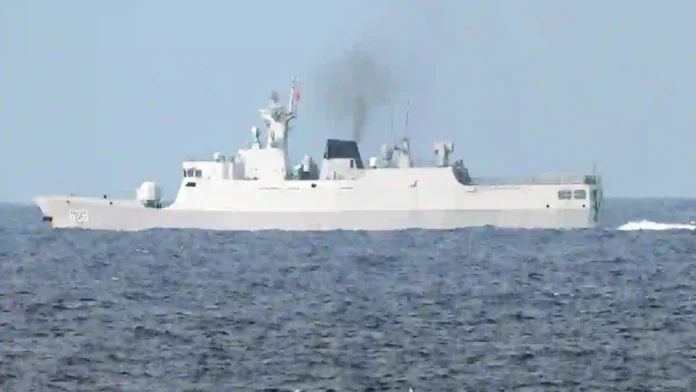A Chinese research vessel operated covertly in the Bay of Bengal for several days by deliberately disabling its Automatic Identification System (AIS), a move intended to conceal its presence from standard maritime tracking systems. The vessel drew attention due to its close proximity to areas of recent Indian naval activity and its recurring presence in the Indian Ocean, which raised suspicions among regional security observers.
The vessel was detected by the French maritime intelligence firm Unseenlabs, which conducted a 16-day satellite survey in the Bay of Bengal using radio frequency (RF) emissions to track ships, even those not transmitting AIS signals.
Read- Concern For India As Debt Diplomacy Sees Bangladesh, Pakistan Converge With China
During this survey, Unseenlabs tracked 1,897 vessels, finding that about 9.6% were not broadcasting AIS, suggesting attempts to hide their locations. The Chinese vessel stood out because, while it was not broadcasting AIS, its RF signature remained consistent and traceable, allowing Unseenlabs to monitor its movements over several days.
The suspected mission of the vessel included:
Seafloor mapping
Acoustic environment analysis
Identification of submarine transit corridors
These activities are significant because they can be dual-use, supporting both civilian research and military operations such as surveillance and anti-submarine warfare readiness. Seafloor data and acoustic profiling are crucial for navies to locate, track, and conceal submarines, and the vessel’s location—about 120 nautical miles off India’s eastern coast, near military zones—added to the suspicion that it was collecting data of strategic value.
Read- Indian Army conducts surgical strikes on ULFA-I and NSCN-K camps in Myanmar
Read- India Fast-Tracks Israeli X-Guard Decoy System For Rafale Jets Amid Regional Security Challenges
The Indian Navy and Coast Guard closely monitored the vessel throughout its time in the region and have reported a constant presence of Chinese research ships in the Indian Ocean in recent years. Although the vessel operated in international waters and not within India’s Exclusive Economic Zone (EEZ), its proximity enabled it to potentially gather undersea and acoustic data relevant for both surveillance and combat planning.
Disabling AIS is not illegal in international waters but is widely seen as a violation of transparency norms and a potential security risk, especially near another country’s maritime zones. Indian defence planners view these actions as part of a broader Chinese campaign to expand its maritime footprint and intelligence gathering in the Indian Ocean Region (IOR), with expectations that China may soon deploy aircraft carriers in addition to its existing naval assets in the area.
The Chinese research vessel attempted to conceal its presence by switching off AIS, but was detected and tracked through RF emissions by satellite surveillance, highlighting ongoing concerns about underwater surveillance, maritime domain awareness, and strategic rivalry in the Indo-Pacific.
Based On MoneyControl Report
Agencies




